
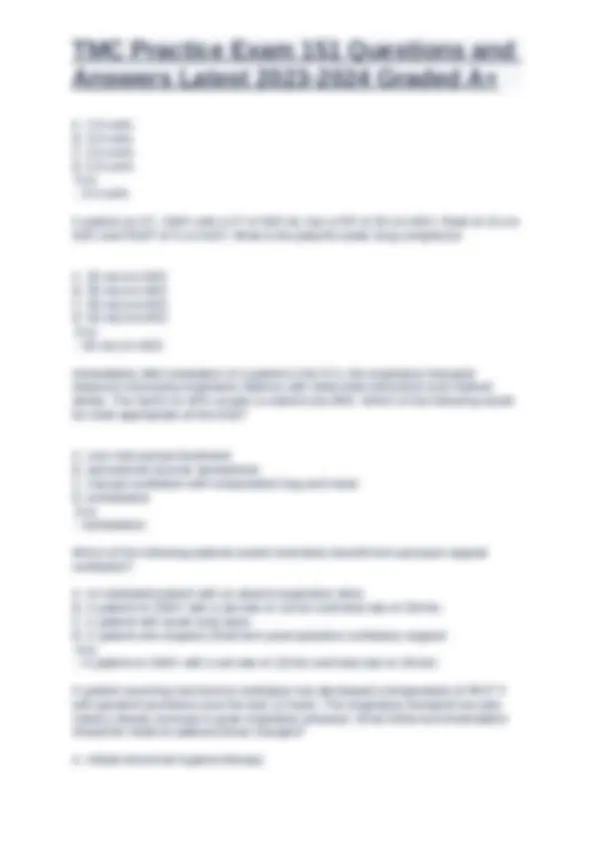
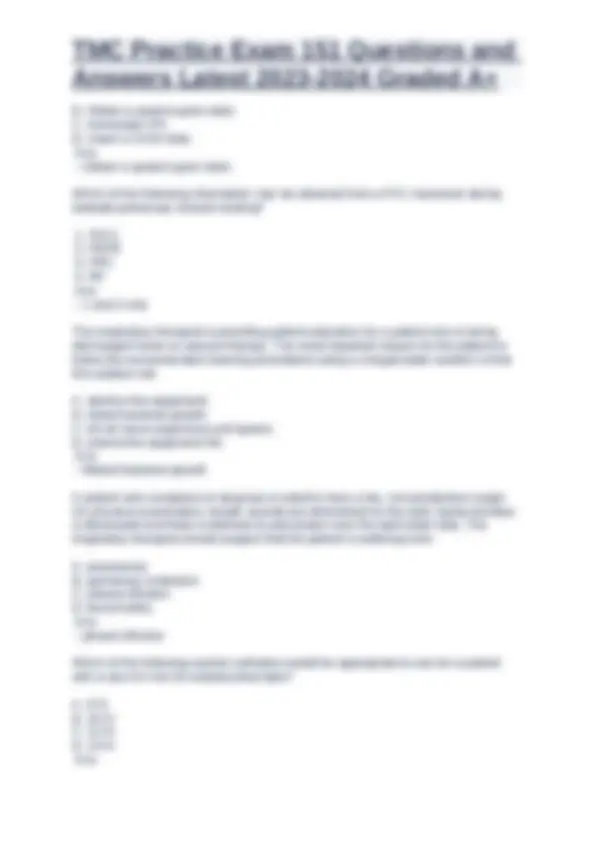
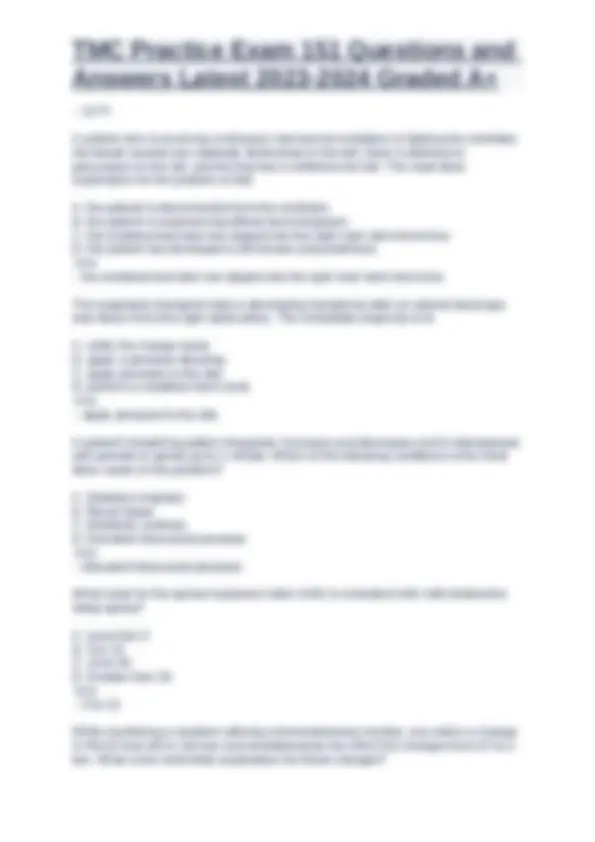
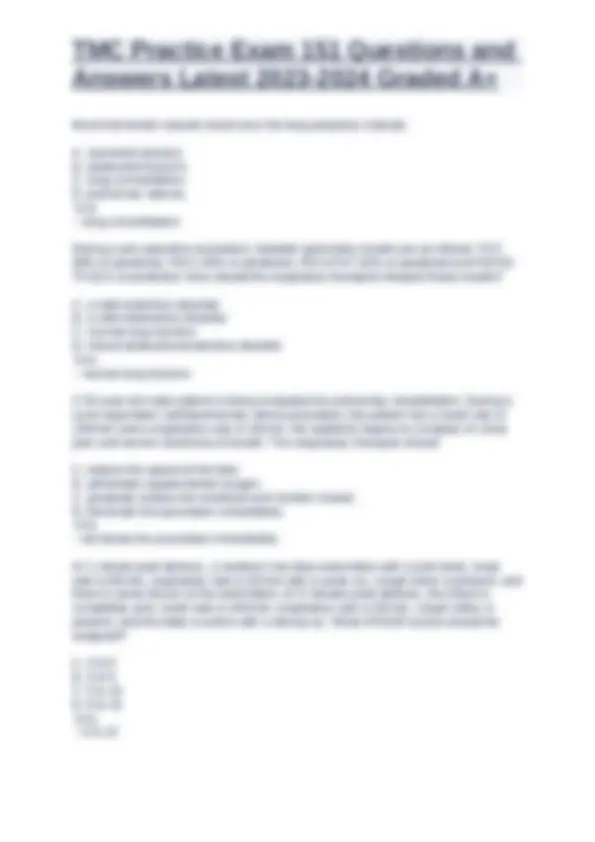
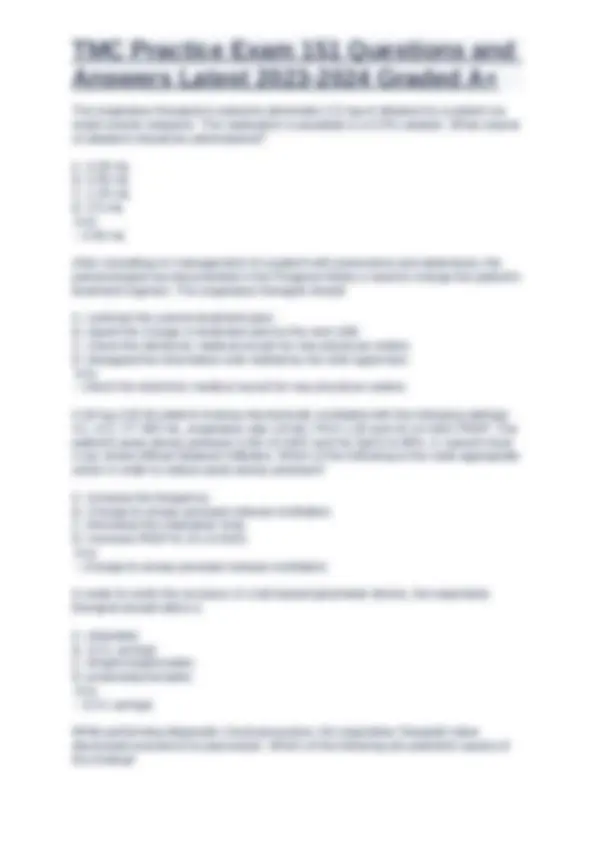
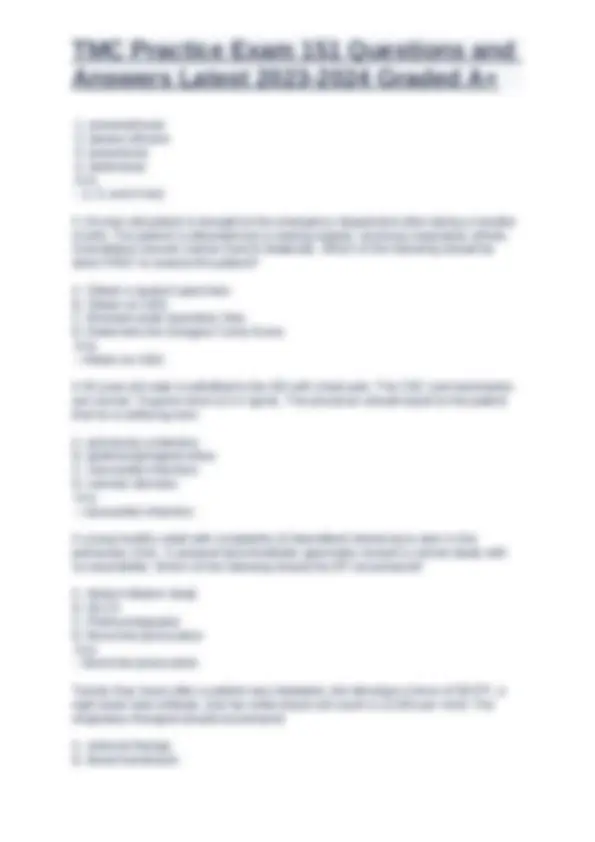
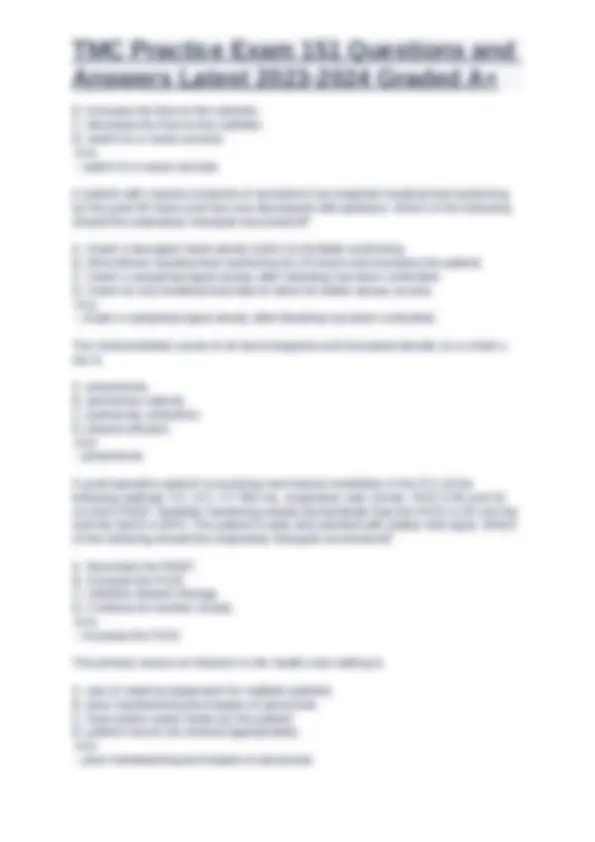
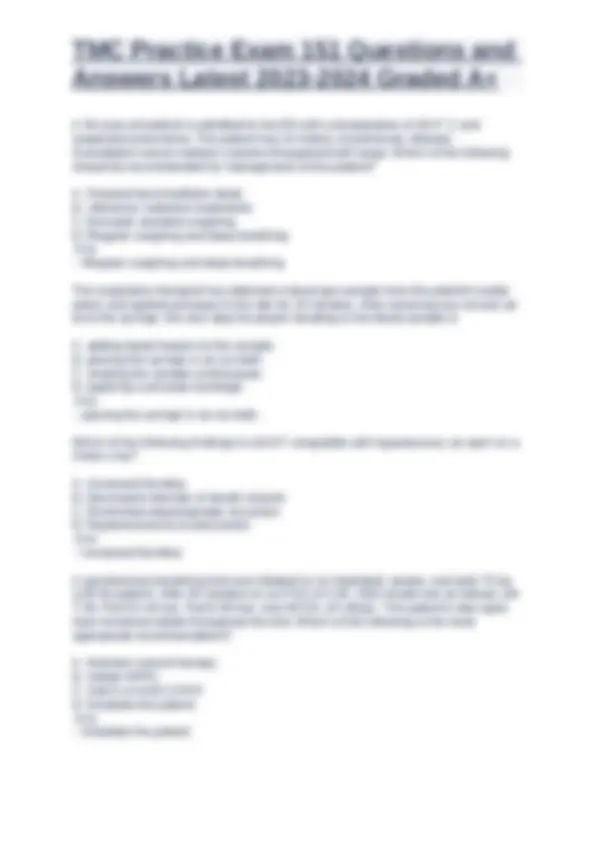
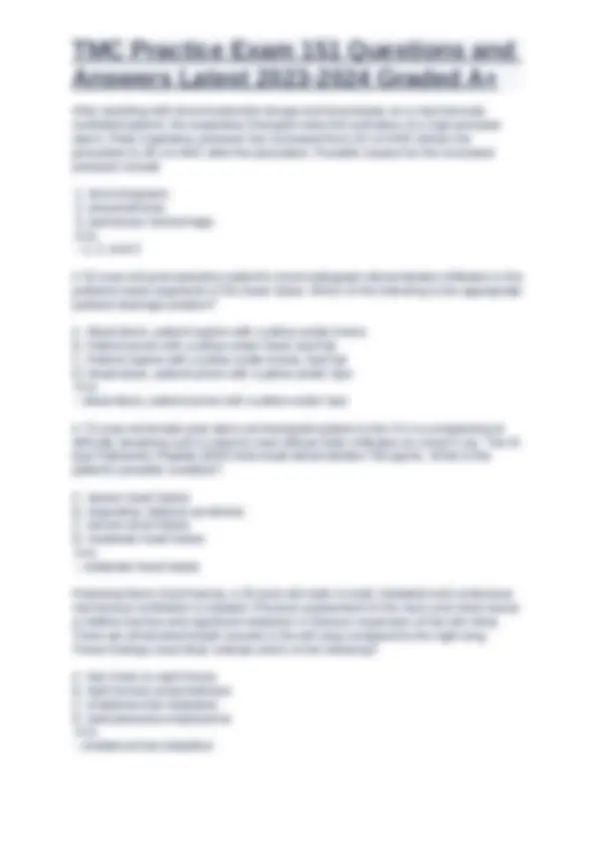
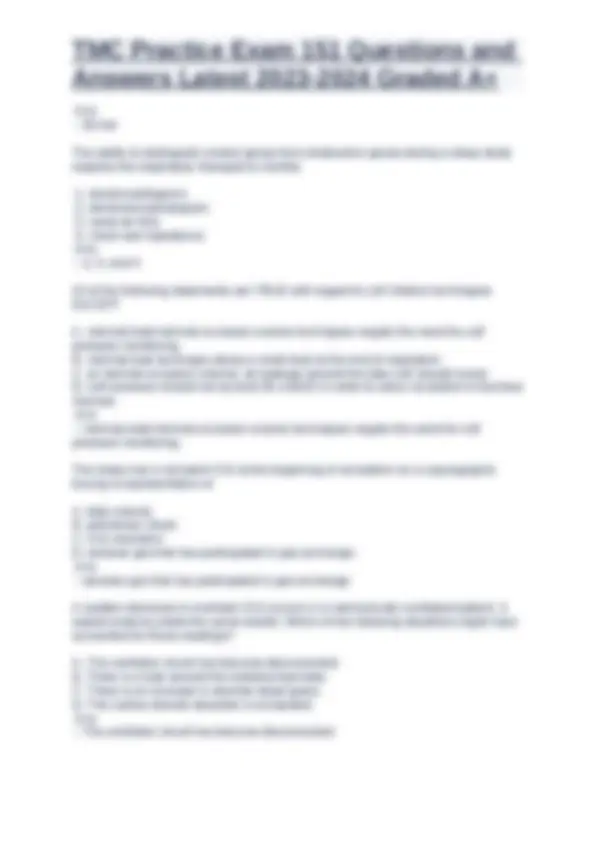
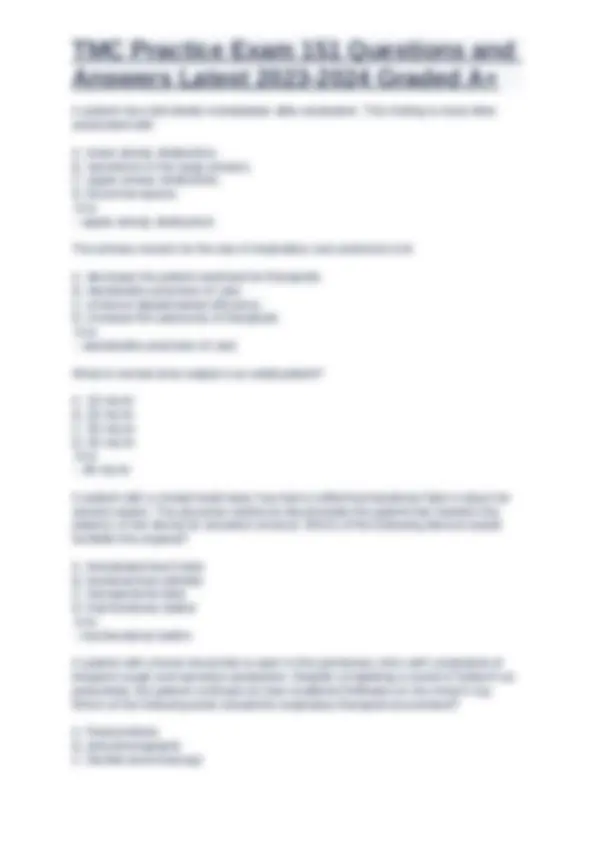
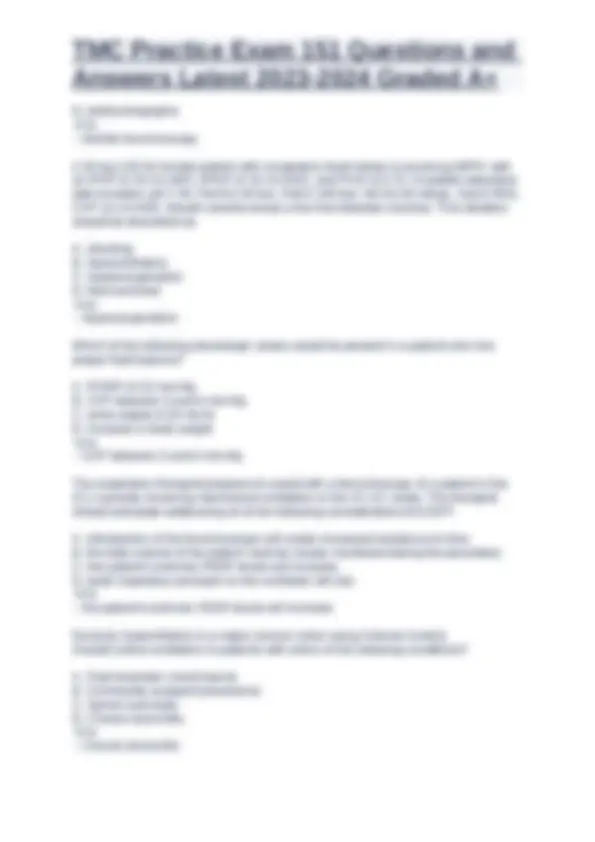
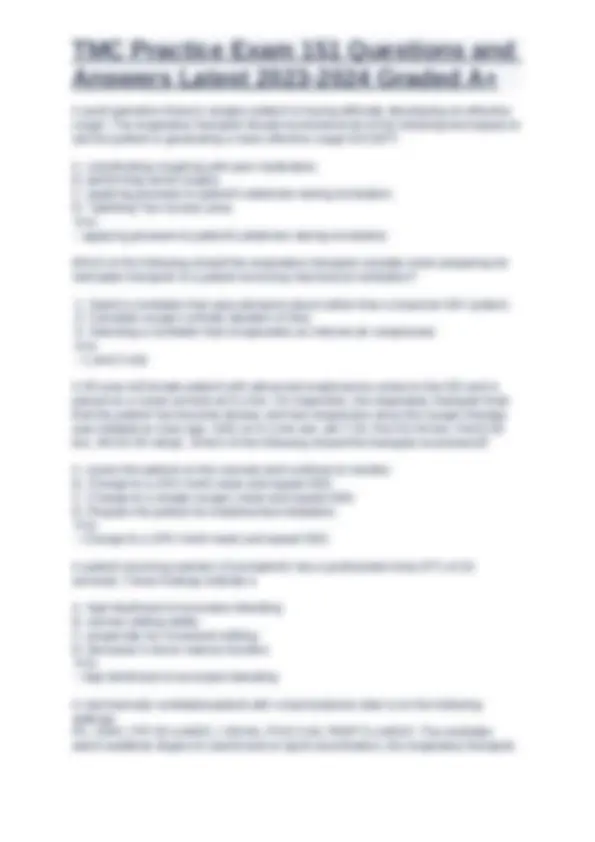
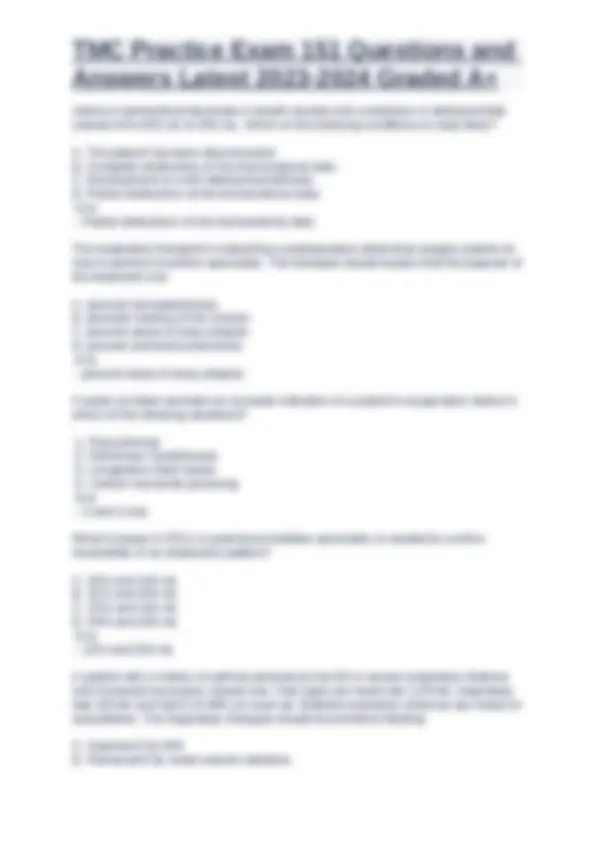
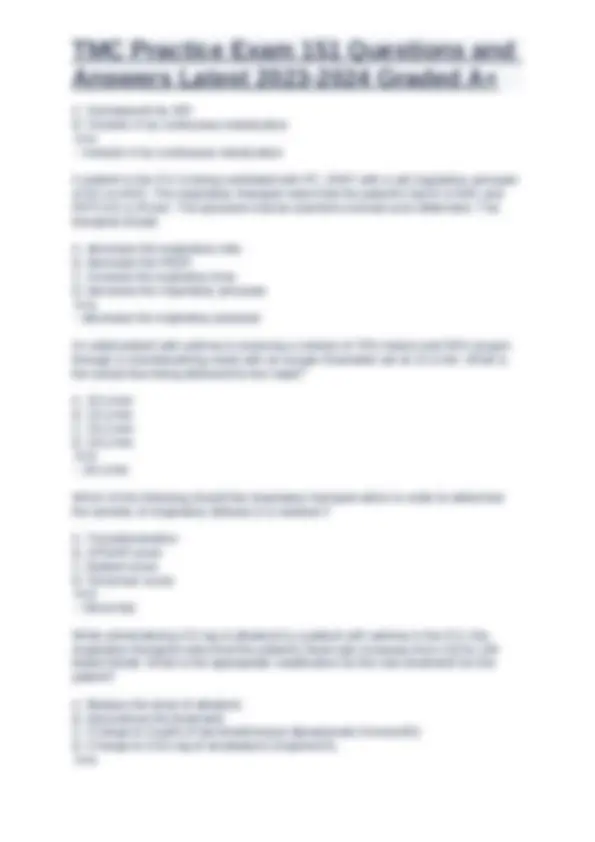
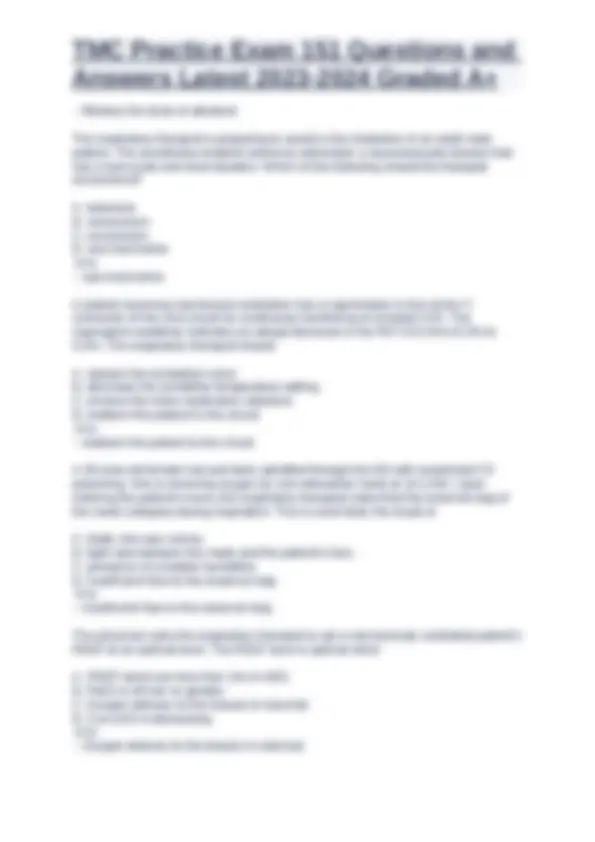
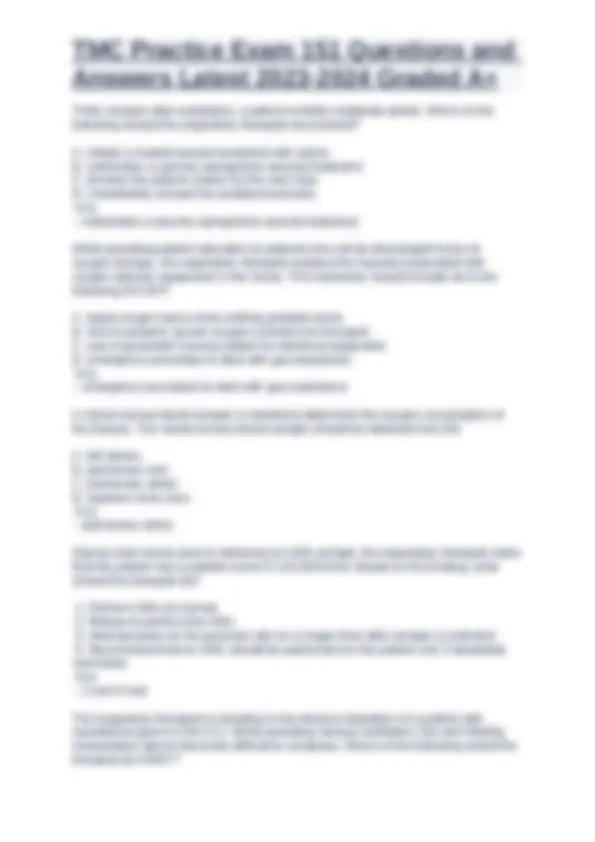
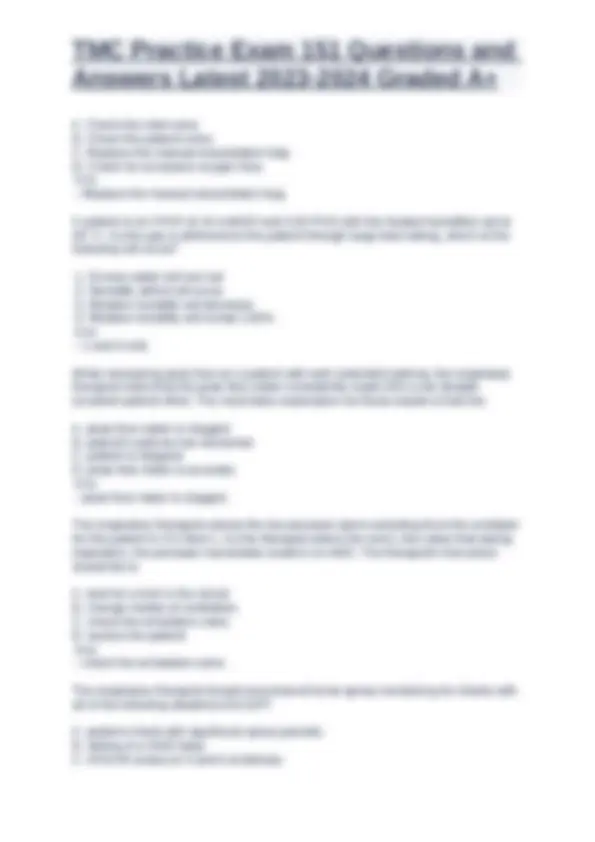
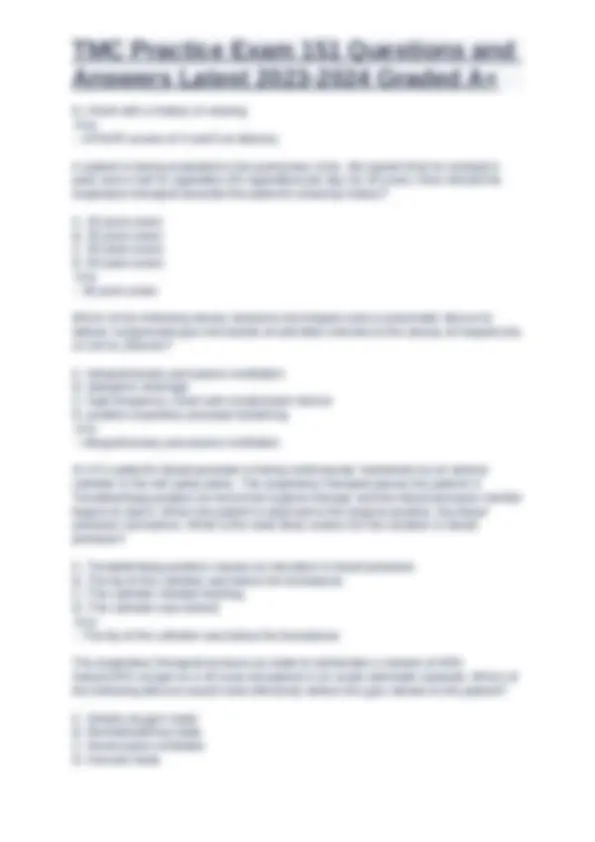
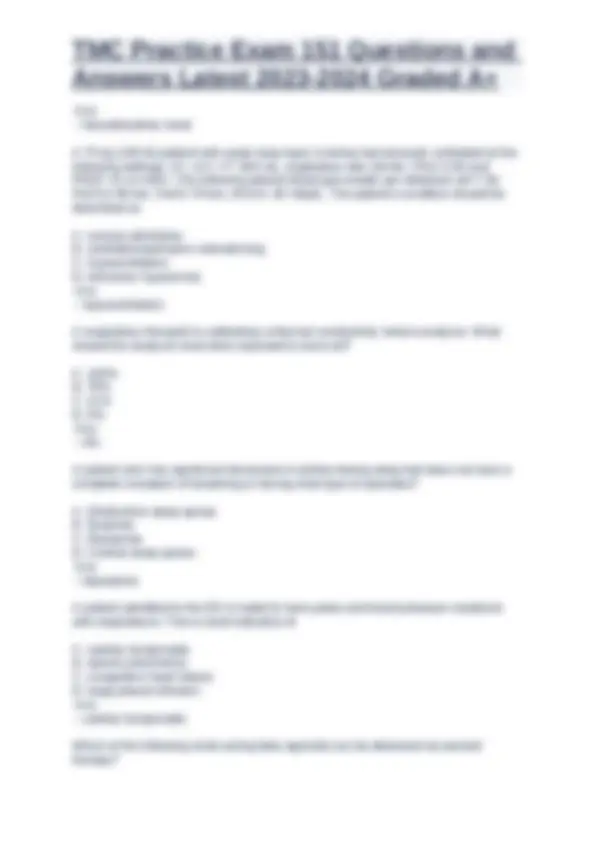
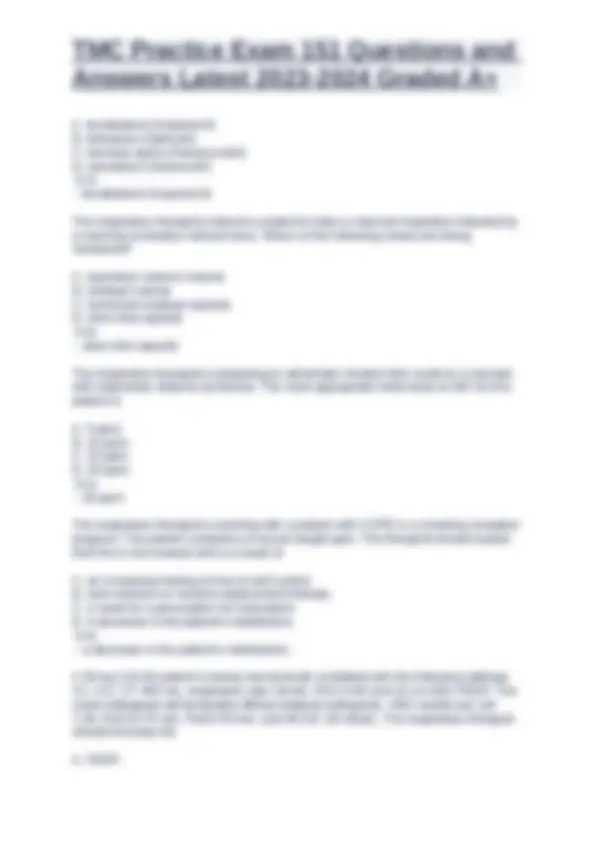
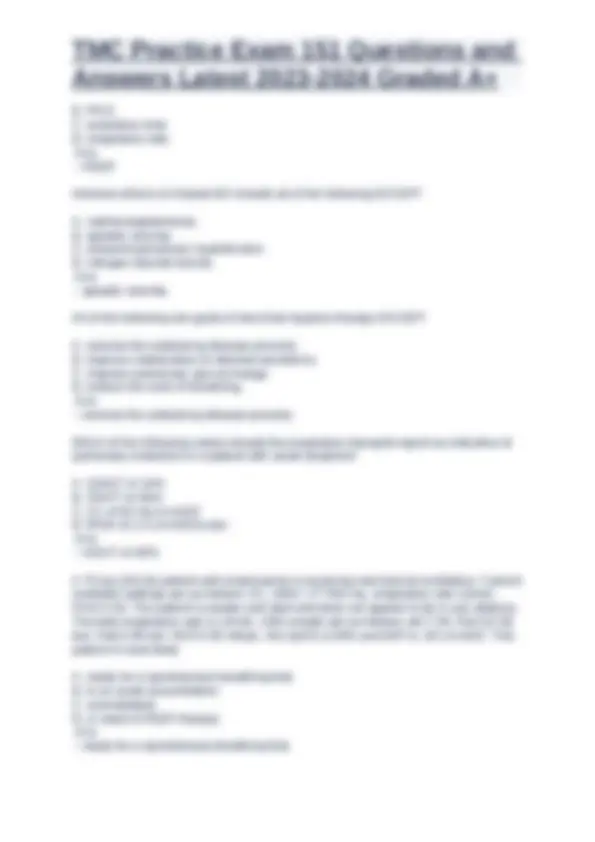
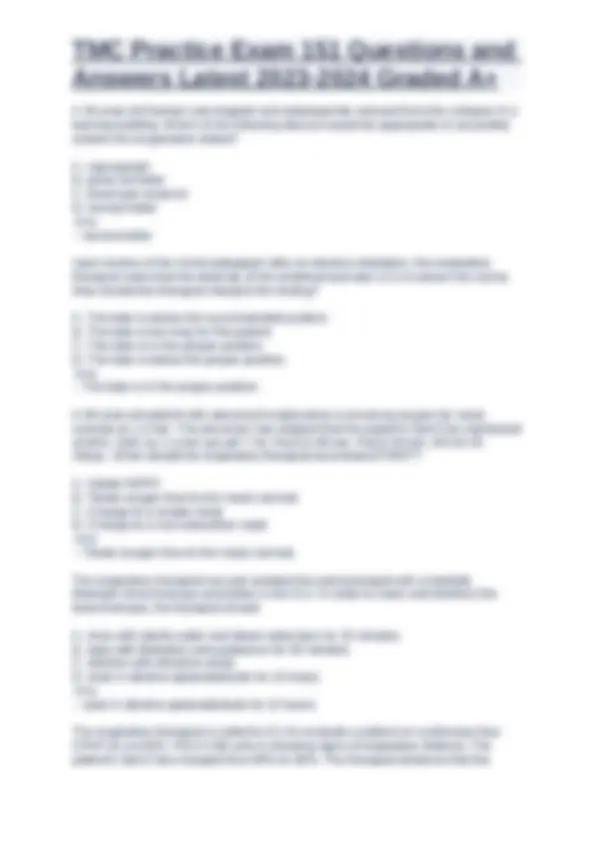
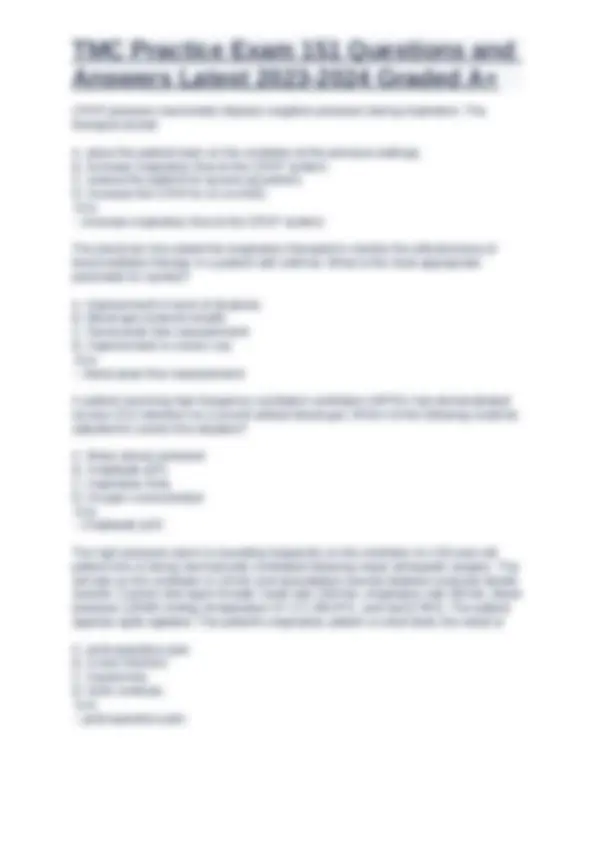
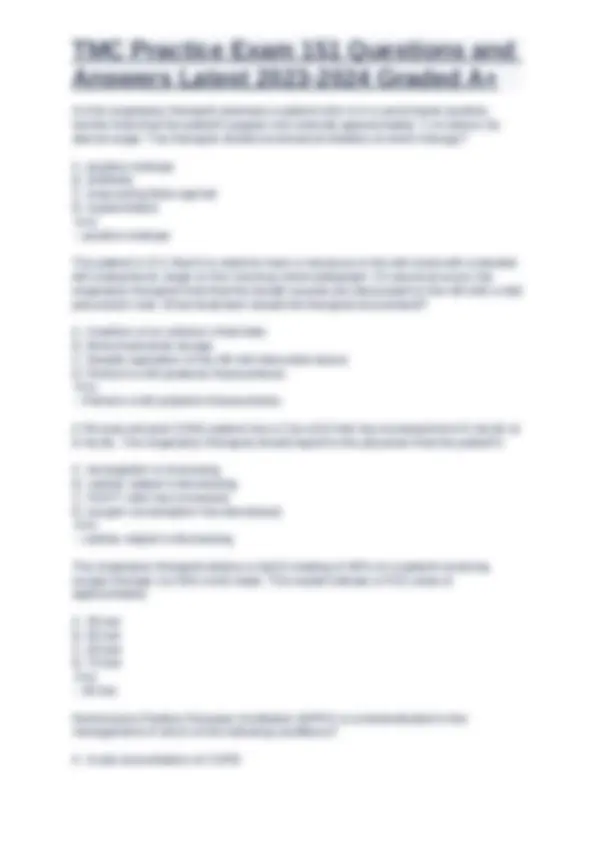
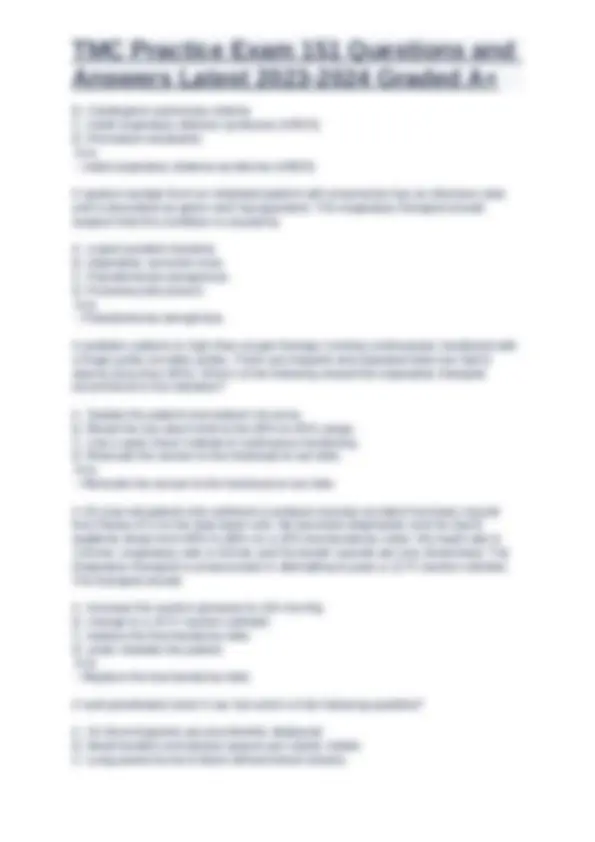
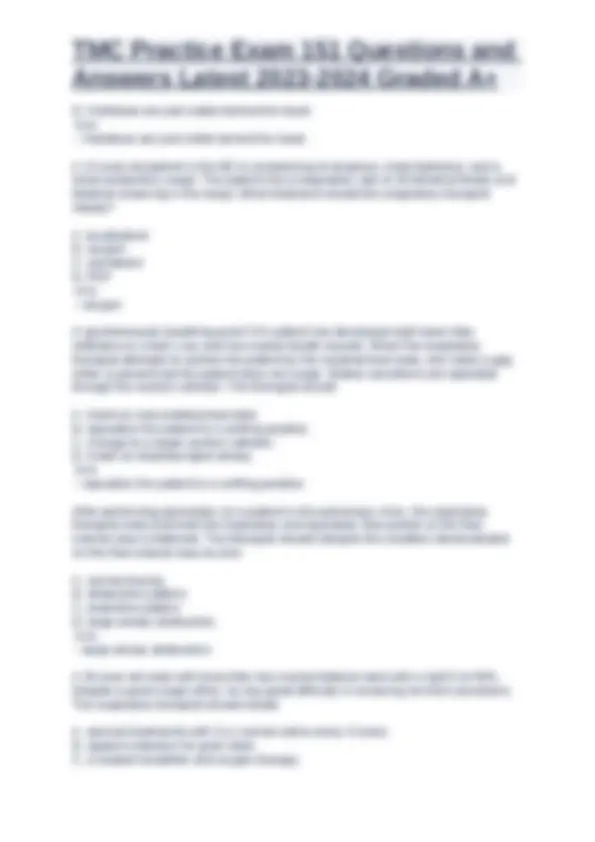
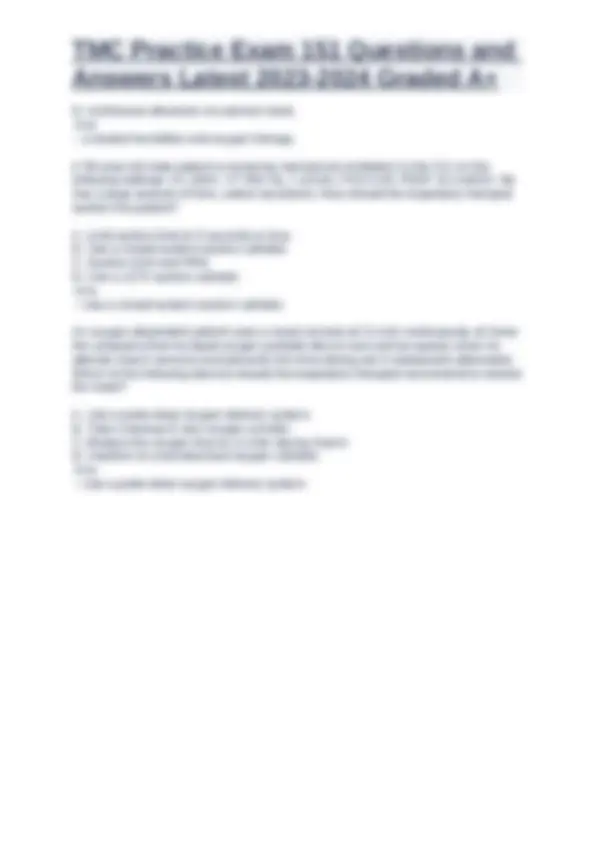


Study with the several resources on Docsity

Earn points by helping other students or get them with a premium plan


Prepare for your exams
Study with the several resources on Docsity

Earn points to download
Earn points by helping other students or get them with a premium plan
Community
Ask the community for help and clear up your study doubts
Discover the best universities in your country according to Docsity users
Free resources
Download our free guides on studying techniques, anxiety management strategies, and thesis advice from Docsity tutors
A practice exam for respiratory therapy, covering topics such as ventilation settings, patient assessment, and airway clearance techniques. It includes 151 questions with answers, graded a+ and latest for the 2023-2024 academic year.
Typology: Exams
1 / 36

This page cannot be seen from the preview
Don't miss anything!





























A 48 year-old female is admitted to the ED with diaphoresis, jugular venous distension, and 3+ pitting edema in the ankles. These findings are consistent with A. liver failure. B. pulmonary embolism. C. heart failure. D. electrolyte imbalances Ans
A. continuing the therapy until breath sounds improve. B. administering dornase alpha. C. administering albuterol therapy. D. deep breathing and coughing to clear secretions. Ans
B. Obtain a sputum gram stain. C. Administer IPV. D. Insert a CASS tube. Ans
Bronchial breath sounds heard over the lung periphery indicate A. narrowed airways. B. obstructed bronchi. C. lung consolidation. D. pulmonary edema. Ans
C. SABA by small volume nebulizer. D. antibiotic therapy. Ans
B. increase the flow to the catheter. C. decrease the flow to the catheter. D. switch to a nasal cannula. Ans
A 36 year-old patient is admitted to the ED with a temperature of 38.5° C and suspected pneumonia. The patient has no history of pulmonary disease. Auscultation reveal medium crackles throughout both lungs. Which of the following should be recommended for management of this patient? A. Pre/post bronchodilator study B. Ultrasonic nebulizer treatments C. Manually assisted coughing D. Regular coughing and deep breathing Ans
A patient receiving pressure-controlled ventilation has acute hypoventilation with an ETCO2 of 70 torr. His vital signs include: heart rate 90/min, respiratory rate 18/min, SpO2 94%. Which of the following change(s) will address the situation?
The respiratory therapist is completing oxygen rounds on the ward and checking oxygen saturations on a number of patients. What solution would be most appropriate for disinfecting the surface of the pulse oximeter between patients? A. 70% ethyl alchohol B. Warm soapy water C. Bleach D. Acid glutaraldehyde Ans
A patient has mild stridor immediately after extubation. This finding is most often associated with A. lower airway obstruction. B. secretions in the large airways. C. upper airway obstruction. D. bronchial spasm. Ans
D. plethysmography Ans